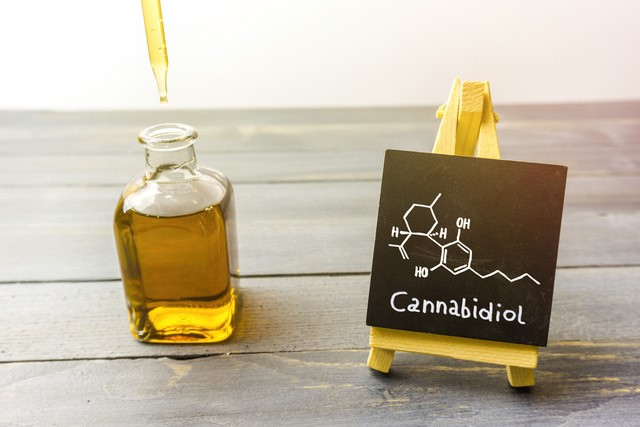What is Hemp Oil?
CBD and CBG
The Dynamic Duo of Superfoods
WHAT ARE CANNABINOIDS?
A cannabinoid is a large group of phytochemicals extracted from the cannabis plant. It has been identified to elicit a wide range of medical properties. At the time of writing this article, they have been successfully utilized as antioxidant, antidepressant and antimicrobial agents to mention but a few. This massive level of activity is attributed to the ability of these cannabinoids to interact with the CB1 and CB2 receptors of the endocannabinoid system (ECS). The ECS is a part of the central nervous system, and it plays vital roles in the regulation of appetite and hunger, hormonal balance, pain, rest and sleep. Some researchers are of the view that a wide range of illnesses is caused by a deficiency in the total concentration of cannabinoid present in circulation known as Clinical Endocannabinoid Deficiency (CECD).
The combination of cannabinoids to formulate a single product has been shown to elicit a higher level of activity hence the reason why we decided to produce a compound with an equal mixture of Cannabidiol (CBD) and cannabigerol (CBG). There are over 100 different cannabinoids present in the cannabis plant. These cannabinoids include but are not limited to tetrahydrocannabinol (THC), cannabidiol (CBD), Cannabinol (CBN) and cannabigerol (CBG), listed in order of decreasing abundance. THC is highly reactive and considered illegal in some states since it can interfere with brain function and make the user high. In this article, we shall discuss the benefits of CBD and CBG mixture and how it will assist users in obtaining the best from their cannabinoid products.
WHAT IS CBD?
Cannabidiol (CBD) is a non-intoxicating component of the cannabis plant that has enormous therapeutic potential. Known as a superfood CBD is full of important dietary nutriments. It’s high in protein and contains all 20 amino acids, including the 9 essential amino acids. It has the perfect ratio of omegas 3, 6, and 9, vitamins A, B1, B2, B3, B6, C, E and many other key minerals. Apart from THC, CBD is the most highly studied phytocannabinoid in the market. This is due to its ability to interact with the ECS and elicit a wide range of medicinal properties including the reduction in hormonal imbalance, chronic pain, nerve health, appetite, anxiety, and depression. It can interact with the CB1 and CB2 receptors of the ECS to boost the production of endocannabinoids such as anandamide which stimulates the production of feel-good hormones and improves relaxation.
WHAT IS CBG?
Known as the “mother of all cannabinoids”, CBG is an active non-psychotropic compound extracted from the cannabis plant. CBG was first discovered in Israel in 1964 and research shows that it is gaining popularity due to its powerful anti-bacterial effects. Although not as widely studied, CBG might well prove to be superior to CBD in specific cases. Some researchers believe CBG works even better than CBD and holds greater promise from a medicinal standpoint. Not only is CBG a powerful vasodilator, it has neuroprotective effects as well. It has been observed that CBG can improve anxiety, pain, inflammation, depression, glaucoma, skin conditions and much more. Additionally if you are looking for relaxed energy and focus CBG is for you.

WHY THE COMBINATION?
Although while acting alone CBD and CBG have an excellent resumes, research has shown that combining them together in a single product can boost the level of activity and interaction thus making them more available for biomedical activity. Cannabinoids have a synergistic relationship which makes the cannabis plant an invaluable addition to medical research. Utilizing a combination of two or more cannabinoids such as CBD and CBG can lead to the following properties;
a. Increased level of activity:
CBG serves as a precursor for the production of other phytocannabinoids such as THC and CBD, and this can improve the level activity of the compound while interacting with the CB1 and CB2 receptors. Increased level of activity will translate into improved results.
b. Improved bioavailability:
Several factors can affect the bioavailability of CBD. These factors such as the concentration of CBD in circulation and the mode of administration can be ultimately overcome by using a combination of CBD and CBG.
c. Amplified therapeutic benefits:
Two is better than one. An equal combination of CBD and CBG boosts the therapeutic activity of the other.

BENEFITS OF CBD/CBG COMBINATION
CILI BY DESIGN products have been synergistically formulated with a 50/50 blend of CBD and CBG, which can be beneficial in the following ways;
• Analgesic effects: CBD and CBG while acting singly can interact with the musculoskeletal system to reduce the stress on the muscles and joints, reduce the expression of inflammation and other disease conditions leading to chronic pain and arthritis in the body. A combination of CBD/CBG can boost the activity by giving more.
• Antibacterial effect: CBG has a strong ability to limit the growth and proliferation of bacterial cells, and this can improve the activity of CBD in restricting the growth of these cells.
• Antidepressant: phytocannabinoids such as CBD and CBG can interact with the ECS and trigger the production of feel-good hormones which raises mood, improves the level of relaxation and can arrest depression.
• Antioxidant effect: endocannabinoids can reduce the harmful effects of free radicals and toxins in the body thus keeping the body at physiological levels.
• Anti-inflammatory effect: they improve the ability of CBD to improve immunity and arrest cases of inflammation and all other disease conditions associated with it.
The other common functions of CBD activities which can be improved through the combination include, appetite stimulant (increases appetite), bone stimulant (promotes bone growth) and brain cell stimulant (promotes neuron growth).
ARE THERE ANY SIDE EFFECTS?
The combination of CBD/CBG creates a holistic effect and does not express adverse side effects in the body.
WHY CHOOSE CILI BY DESIGN PRODUCTS?
Research was recently was conducted by NBC to determine the safety level of CBD products in the market, and the results were quite shocking. The NBC discovered that most of the CBD products in the market had little or no concentration of CBD, contained some microbiological and heavy metals which can be harmful to the body. CILI By Design products are Pharmaceutical Grade and are carefully manufactured using cGMP – Current Good Manufacturing Practice regulations enforced by the FDA. We only use pure Non GMO, EU Organic, whole plant hemp oil with ZERO THC. Our 50/50 blend of
CBD and CBG makes this the only product of its kind in the market.
DISCLAIMER
These statements have not been evaluated by the Food and Drug Administration. The CILI By Design products are not promoted or intended to diagnose, treat, cure or prevent any disease.
Our products here at CILI By Design are THC free.
FURTHER READING
Ashton, C.H., Moore, P.B., Gallagher, P. and Young, A.H. (2005): Cannabinoids in bipolar affective disorder: a review and discussion of their therapeutic potential. Journal of Psychopharmacology. 19:293–300. https://www.ncbi.nlm.nih.gov/pubmed/15888515
Blázquez, C., Chiarlone, A., Bellocchio, L., Resel, E., Pruunsild, P., García-Rincón, D., Sendtner, M., Timmusk, T., Lutz, B., Galve-Roperh, I. and Guzmán, M. (2015). “The CB1 cannabinoid receptor signals striatal neuroprotection via a PI3K/Akt/mTORC1/BDNF pathway”. Cell Death and Differentiation. 22 (10): 1618–1629. http://www.nature.com/cdd/journal/v22/n10/full/cdd201511a.html
Corroon, J., & Phillips, J. A. (2018). A Cross-Sectional Study of Cannabidiol Users. Cannabis and cannabinoid research, 3(1), 152-161. https://www.ncbi.nlm.nih.gov/pubmed/30014038
Donvito, G., Nass, S.R., Wilkerson, J.L., Curry, Z.A., Schurman, L.D.; Kinsey, S.G., Lichtman, A.H. (2017): “The Endogenous Cannabinoid System: A Budding Source of Targets for Treating Inflammatory and Neuropathic Pain.” Neuropsychopharmacology. 43 (1): 52–79. https://www.nature.com/npp/journal/vaop/naam/abs/npp2017204a.html
Kirkham, T.C. (2005): Endocannabinoids in the regulation of appetite and body weight. Behavioral Pharmacology 16:297–313. https://www.ncbi.nlm.nih.gov/pubmed/16148436
Mechoulam R (1986): The Pharmacohistory of Cannabis sativa, in Cannabis as Therapeutic Agent. CRC Press; Boca Raton, FL, USA. https://pdfs.semanticscholar.org/6435/aba915a894a8d8aea768266e367dc8d54f15.pdf
World Health Organization Expert Committee on Drug Dependence. Cannabidiol (CBD) Pre-Review Report Agenda Item 5.2 and Peer Review, 2017. https://www.who.int/medicines/access/controlled-substances/5.2_CBD.pdf
